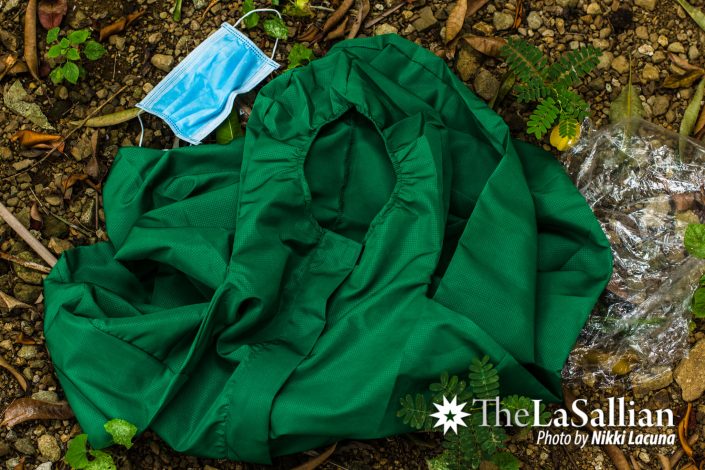The ongoing COVID-19 pandemic has left a large impact on the Philippines. Months of quarantine have resulted in job losses, limited human mobility, and a huge dip in the country’s economy.
With news honing in on the struggles of the country, scientists and researchers have been observing another aspect that the pandemic has affected: the environment. “There were pictures of Metro Manila with bluer skies, fresher air,” recalls Dr. Renzo Guinto, Chief Planetary Doctor of PH Lab, an initiative that aims to innovate solutions combining public health and environmental health. Last May 8, the Center for Research on Energy and Clean Air (CREA) even ranked the Philippines second among Southeast Asian countries to have seen improved air quality.
Guinto cautions, though, that celebrations over such progress are all but premature: “These gains are temporary; these gains are short-lived. And we’re now seeing a very quick reversal again because the lockdowns are short-lived.” As quarantine provisions relax across the country, scientists have only noticed pollution problems steadily climbing back up to their pre-pandemic levels.
Almost breathable
At the start of the year, Metro Manila’s nitrogen dioxide levels would average around 0.25 to 0.35 Dobson units (DU), which is a unit of measurement for gas concentration in Earth’s atmosphere.
The air pollutant, nitrogen dioxide, is a gas usually produced by motor vehicles and coal-fired power plants. With quarantine measures restricting much road transportation, emission of the gas also decreased. March to May even saw nitrogen dioxide levels dropping to less than 0.15 DU in the nation’s capital—a “40 percent reduction in atmospheric nitrogen dioxide”, according to CREA’s Southeast Asia Analyst Isabella Suarez.
There is also a case to be made with the country’s atmospheric particulate matter (PM), referring to a mixture of small solid and liquid particles suspended in the air. Also termed PM2.5, particulate matter with diameters less than 2.5 micrometers are considered dangerous when inhaled. Fine particles like dust, dirt, smoke, and ash can become lodged in lung tissue, causing irritation and possibly disrupting breathing as well as blood circulation.
“The average PM2.5 [in Metro Manila] can be around 40 micrograms per cubic meter or all the way to 70 micrograms per cubic meter,” Suarez reports. Yet, in March, the nation’s capital was averaging 11.59 micrograms per cubic meter—a significant decrease and a sign of cleaner air. In fact, the amount is “almost at the recommended level of the World Health Organization” of 10 micrograms per cubic meter, Suarez notes.

A tranquil environment?
For the pandemic’s effects on the country’s flora and fauna, however, it is too early to say. Biodiversity Management Bureau Wildlife Conservation Section Chief Anson Tagtag suggests that the reduced human activity during the pandemic will be “really advantageous for wildlife”. “Wildlife, in general, wants more or less [a] pristine environment,” he points out.
One example is the bats who live in caves in Boracay and Subic, sites that are frequent tourist destinations. According to Tagtag, bat population numbers in these areas have been on the decline as they experience “persistent disturbance” from visitors.
“This pandemic period, nagkaroon ng katahimikan, [which] allowed [the bats] to rest and to gain more energy to reproduce,” Tagtag theorizes.
(This pandemic period brought tranquility to the caves, which allowed the bats to rest and to gain more energy to reproduce.)
For marine life, “Traffic and navigational activities [are] limited—and regulated—which can result in lesser marine noise pollution,” explains Desiree Maaño, chief of the BMB Coastal and Marine Ecosystems Management Section. She even cites how there have been reported sightings of orcas or killer whales in Bohol. Maaño notes, however, that further studies still need to be done to verify if the return of wildlife can be directly attributed to the reduced navigational traffic in the seas.
Gearing for the long-term
The seemingly “positive transitions” to a cleaner and safer environment, Guinto explains, are largely impermanent. Data gathered by the CREA paint a similar tale; Suarez points out that nitrogen dioxide and PM2.5 concentrations in Metro Manila have spiked back up “to the same levels as February”.
“[It is] not surprising, because we are [still] dependent on the same sources we were [dependent on] before quarantine,” she reasons.
While there is no perfect system or society, the pandemic reflected these flaws in a much more pronounced manner, Guinto states. He further cites how the limits of the country’s healthcare system were put to the test, showing how “unready” it is in tackling COVID-19.
The wake of the pandemic also brought about another challenge in a form of personal protective equipment (PPE) pollution.
Maaño observes that plastic use may have escalated due to the increased need for PPEs and plastic face shields, which cannot really be reused for safety purposes, to protect frontliners. She comments, “Mataas din ‘yung garbage disposal na nage-end up sa dagat”—posing a hazard to the local aquatic life.
(A large amount of garbage disposed of ends up in the sea.)
Sharing his outlook for a post-pandemic world, Guinto stresses that the country should seize the opportunity to make the positive effects on the environment more permanent by implementing “systematic and structural changes” on how the country deals with pollution.
“The next challenge is how can we sustain [and] make sure that once we are done with this pandemic, we actually end up achieving the world that we want,” he surmises, envisioning a more “sustainable” and “climate-friendly” society. “[It] is the time to really come together, reimagine together [and to] recreate, redesign, a new blueprint for the future.”
